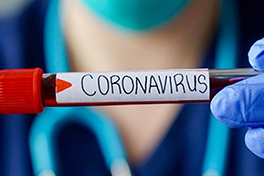Working on Solutions for the Virus

Three faculties lab are hard at work (following the Ministry of Health’s guidelines, of course), conducting research and trying to solve the problems of the Coronavirus pandemic, in diagnosis and treatment
Dr. Amos Danieli is working on a method for quick virus identification which will dramatically reduce waiting times for results, from one hour to 15 minutes. Danieli’s technology is based on a combination of magnetic particles and optics via PCR – a polymeric chain reaction. The virus’s RNA is injected with a fluorescent molecule that attracts magnetic particles to one place, for easier detection in saliva samples. Danieli’s technology has already been successfully demonstrated on the Zika virus and is used by the Ministry of Health’s Central Virology Lab at Sheba Medical Center. It is currently being adapted for Coronavirus detection.
Prof. Ze’ev Zalevsky, Dean of the Faculty of Engineering, is also working on adapting his research to the Coronavirus. Zalevsky’s technology is based on remote biomedical sensing and can be used for quick diagnosis of those who already present symptoms such as rhonchi, fever or decreased blood oxygen saturation levels. “Our device can remotely sense nano-movements of the tissues closest to the blood vessel and identify movement shifts caused by changes to these parameters,” explains Zalevsky. “The sensor includes a laser beam that lights up the tissues and a camera that creates light distribution patterns according to regularities related to the movement of the tissue.” Salevsky’s method works remotely and is therefore particularly useful in cases such as the Coronavirus, where contact comes at a high risk of contracting the disease. The technology developed by Zalevsy and his colleague, Prof. Javier García from the University of Valencia in Spain is already making waves around the world. Spain’s second largest radio station, Ondacero, recently published an item on it. You can listen to it here (in Spanish).
Prof. Gur Yaari is also dedicating his time to the Coronavirus – developing a vaccine, to be precise. “We are trying to develop antibodies that can be injected as passive immunization against the Coronavirus; these antibodies have to be identified by sequencing the antibody repertoire found in people who have recovered from the virus,” explains Yaari. “It’s a complex bureaucratic procedure: We have to collect blood samples from people who have recovered, find the common factor in their antibodies, and create a new antibody accordingly – one that can be used as passive immunization. At this point, we are awaiting funding and regulation, including finding a lab that can produce the RNA needed for the sequencing. Not every lab can do it, because it’s a dangerous virus. I hope we can begin at the beginning of April.”
Last Updated Date : 05/04/2020



